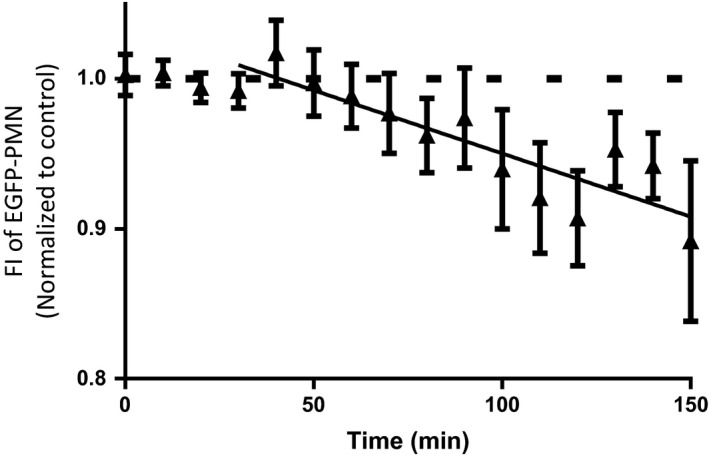Figure 4.

Atrial natriuretic peptide (ANP) induces the FI intensity from polymorphonuclear leukocytes (PMNs) in the skin wound to fall by 5%/h when applied to the wound. This is significantly greater than the result expected if ANP did not reduce PMN levels (n = 5; P < 0.0001; F‐test). We have previously demonstrated that after the 30 min of such exposure, ANP also attenuates thrombin‐induced hyperpermeability (as in Fig. 2B). The results in Figure 4 taken with these previous observations confirm that ANP reduces PMN accumulation in both the presence and absence of thrombin. Note that the FI reflects signal from all PMNs (intravascular and extravascular in the wound). To the extent that PMNs closely associated with the endothelial cell surface are only a fraction of the total PMNs, the fractional reduction in PMNs at the endothelial surface is expected to be larger than 10%.
